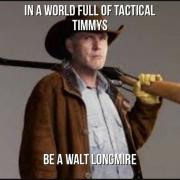Yes, absolutely agree.
Without LEO or mil training/experience, us civies have to think this stuff through on our own. I sincerely hope I will never find myself in such a scenario, but there seems no escape from media reports of the same.
Just a bit of BG, our youngest daughter is a RN at Mass Gen Hospital In Boston, she cared for some of the most seriously injured of the Marathon bombing. We lived her awful experience through her text messages and phone calls.
Our oldest daughter lives and works in NYC, on the same block of the most recent terrorist attack of using a truck to run down pedestrians.
There seems no escape so it's difficult for me to not think about this stuff.





 Reply With Quote
Reply With Quote




